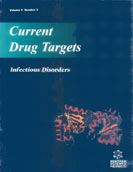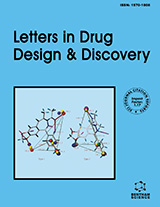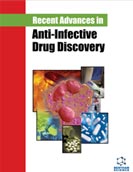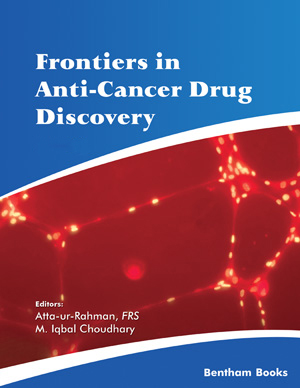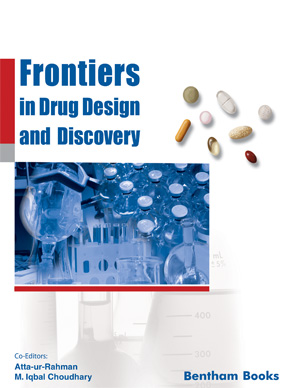Abstract
Atopic disorders include a range of conditions such as allergic asthma, -rhinitis, -conjunctivitis, -dermatitis, food and drug allergies and anaphylaxis. Induction of T helper (Th)-2 immune response with consequent IgE dependent eosinophil, basophil and mast cell mediated tissue damage is the characteristic feature of allergies. The mechanism underlying this unique and long appreciated feature of allergy is being elucidated at the molecular level with advances in our knowledge of the chemokine system. Thus, chemokines that target CCR3 in concert with Th2 cytokines appear to play a pathogenic role in allergy. In contrast, chemokines that target CXCR3 in concert with Th1 cytokine appear to play a beneficial role. Accordingly, inhibiting CCR3 / Th2 pathway using CCR3 antagonists is viewed as a potentially useful strategy for anti-allergy drug development. In contrast, the idea of using CXCR3 agonists to inhibiting allergic response by promoting CXCR3 / Th1 pathway faces serious concerns of their potential pro-inflammatory activities in vivo. In this article we have critically evaluated the literature examining the principle and potential of this anti-allergy drug development strategy including a summary of various compounds that are under investigation.
Keywords: chemokines, th1/th2 cytokines, ccr3, cxcr3, drugs, allergy, inflammation
Current Drug Targets - Inflammation & Allergy
Title: CCR3 and CXCR3 as Drug Targets for Allergy: Principles and Potential
Volume: 2 Issue: 1
Author(s): Venu Gangur, Neil P. Birmingham, Sirinart Thanesvorakul and Shama Joseph
Affiliation:
Keywords: chemokines, th1/th2 cytokines, ccr3, cxcr3, drugs, allergy, inflammation
Abstract: Atopic disorders include a range of conditions such as allergic asthma, -rhinitis, -conjunctivitis, -dermatitis, food and drug allergies and anaphylaxis. Induction of T helper (Th)-2 immune response with consequent IgE dependent eosinophil, basophil and mast cell mediated tissue damage is the characteristic feature of allergies. The mechanism underlying this unique and long appreciated feature of allergy is being elucidated at the molecular level with advances in our knowledge of the chemokine system. Thus, chemokines that target CCR3 in concert with Th2 cytokines appear to play a pathogenic role in allergy. In contrast, chemokines that target CXCR3 in concert with Th1 cytokine appear to play a beneficial role. Accordingly, inhibiting CCR3 / Th2 pathway using CCR3 antagonists is viewed as a potentially useful strategy for anti-allergy drug development. In contrast, the idea of using CXCR3 agonists to inhibiting allergic response by promoting CXCR3 / Th1 pathway faces serious concerns of their potential pro-inflammatory activities in vivo. In this article we have critically evaluated the literature examining the principle and potential of this anti-allergy drug development strategy including a summary of various compounds that are under investigation.
Export Options
About this article
Cite this article as:
Gangur Venu, Birmingham P. Neil, Thanesvorakul Sirinart and Joseph Shama, CCR3 and CXCR3 as Drug Targets for Allergy: Principles and Potential, Current Drug Targets - Inflammation & Allergy 2003; 2 (1) . https://dx.doi.org/10.2174/1568010033344453
| DOI https://dx.doi.org/10.2174/1568010033344453 |
Print ISSN 1568-010X |
| Publisher Name Bentham Science Publisher |
Online ISSN 1568-010X |
 27
27Related Articles
-
Modulation of the Fce Receptor I Signaling by Tyrosine Kinase Inhibitors: Search for Therapeutic Targets of Inflammatory and Allergy Diseases
Current Pharmaceutical Design Association of Serum Vitamin D with Asthma and Atopy in Childhood: Review of Epidemiological Observational Studies
Mini-Reviews in Medicinal Chemistry Allosteric Enhancers for A1 Adenosine Receptor
Mini-Reviews in Medicinal Chemistry Recent Advances in Oral Pulsatile Drug Delivery
Recent Patents on Drug Delivery & Formulation A Sensitive Microscale HPLC-UV Method for the Determination of Doxofylline and its Metabolites in Plasma: An Adapted Method for Therapeutic Drug Monitoring in Children
Current Pharmaceutical Analysis Molecular Targets of Rheumatoid Arthritis
Inflammation & Allergy - Drug Targets (Discontinued) Advancement of Mechanisms of Coxsackie Virus B3-Induced Myocarditis Pathogenesis and the Potential Therapeutic Targets
Current Drug Targets Meet Our Editorial Board Member
Recent Patents on Inflammation & Allergy Drug Discovery Smoking and Obesity Increase Airway Hyperesponsiveness Risk in the Elderly
Current Aging Science Synthetic and Natural Immunomodulators Acting as Interferon Inducers
Current Pharmaceutical Design Gene-environment Interactions in Late Life: Linking Psychosocial Stress with Brain Aging
Current Neuropharmacology Susceptibility to Rhinovirus-induced Early Wheezing as a Risk Factor for Subsequent Asthma Development
Current Respiratory Medicine Reviews Stable Angina Pectoris: Current Medical Treatment
Current Pharmaceutical Design Editorial [Hot Topic: Recent Advances and Future Prospect in Protease Targeting (Executive Editor: B. Turk)]
Current Pharmaceutical Design Interactions Between Airway Epithelial Cells and Dendritic Cells: Implications for the Regulation of Airway Inflammation
Current Drug Targets Thymoquinone Shows the Diverse Therapeutic Actions by Modulating Multiple Cell Signaling Pathways: Single Drug for Multiple Targets
Current Pharmaceutical Biotechnology An Educational Altered Eating Intervention’s Effect on Chronic Pain, Satisfaction, and Routine
Applied Clinical Research, Clinical Trials and Regulatory Affairs Recent Progress in the Design of Selectin Inhibitors
Mini-Reviews in Medicinal Chemistry The Role of T-Helper Cells in Atherosclerosis
Cardiovascular & Hematological Agents in Medicinal Chemistry Plasticity of T Cell Differentiation and Cytokine Signature: A Double-Edged Sword for Immune Responses
Immunology, Endocrine & Metabolic Agents in Medicinal Chemistry (Discontinued)


